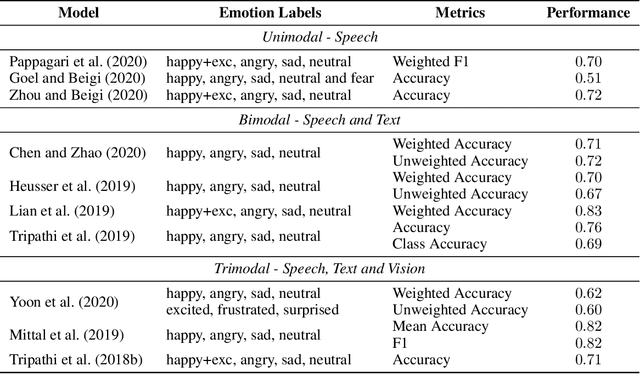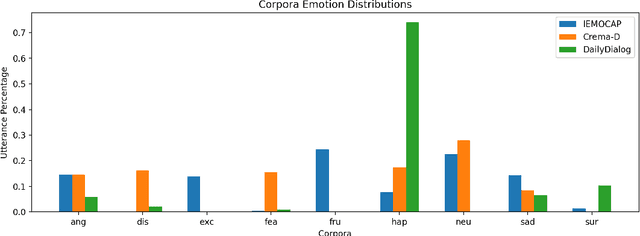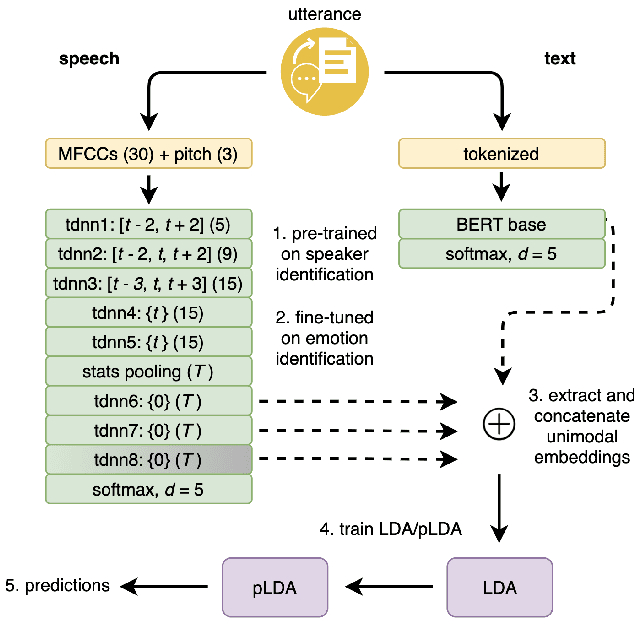Multi-Modal Emotion Detection with Transfer Learning
Paper and Code
Nov 13, 2020



Automated emotion detection in speech is a challenging task due to the complex interdependence between words and the manner in which they are spoken. It is made more difficult by the available datasets; their small size and incompatible labeling idiosyncrasies make it hard to build generalizable emotion detection systems. To address these two challenges, we present a multi-modal approach that first transfers learning from related tasks in speech and text to produce robust neural embeddings and then uses these embeddings to train a pLDA classifier that is able to adapt to previously unseen emotions and domains. We begin by training a multilayer TDNN on the task of speaker identification with the VoxCeleb corpora and then fine-tune it on the task of emotion identification with the Crema-D corpus. Using this network, we extract speech embeddings for Crema-D from each of its layers, generate and concatenate text embeddings for the accompanying transcripts using a fine-tuned BERT model and then train an LDA - pLDA classifier on the resulting dense representations. We exhaustively evaluate the predictive power of every component: the TDNN alone, speech embeddings from each of its layers alone, text embeddings alone and every combination thereof. Our best variant, trained on only VoxCeleb and Crema-D and evaluated on IEMOCAP, achieves an EER of 38.05%. Including a portion of IEMOCAP during training produces a 5-fold averaged EER of 25.72% (For comparison, 44.71% of the gold-label annotations include at least one annotator who disagrees).
 Add to Chrome
Add to Chrome Add to Firefox
Add to Firefox Add to Edge
Add to Edge